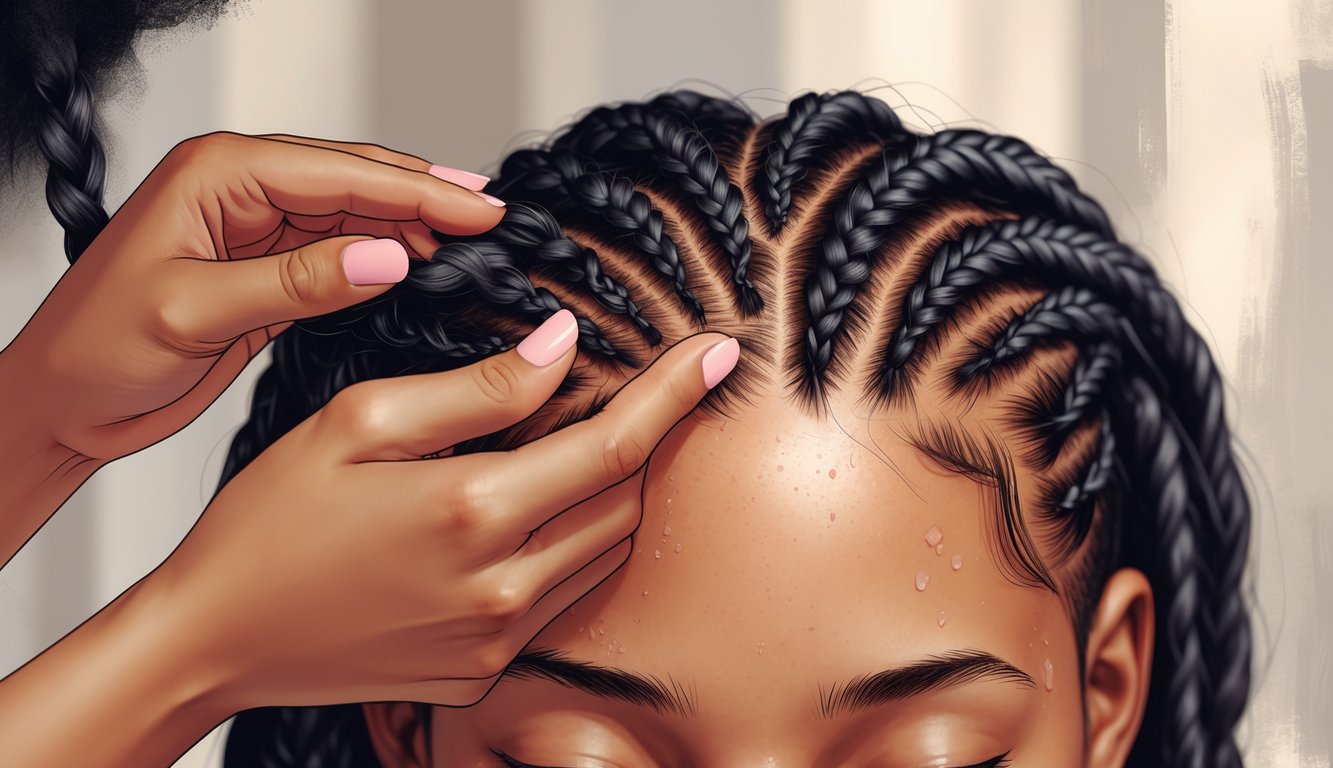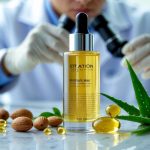
Essential Maintenance Tips for Healthy Braids
Let’s talk maintenance. Braids look effortless, but my scalp always ends up itchy, flaky, or just sad unless I work at it. People ask me if braids are really “set it and forget it.” Spoiler: they’re not.
Cleansing the Scalp While Wearing Box Braids
Scrubbing? Don’t even try it—frizz city, plus flakes stay. I go for a diluted clarifying shampoo in a spray bottle. Hit the scalp, massage with fingertips, no nails. That’s it.
Apparently, [Trichology Reports, 2023] says sulfate-free stuff cuts irritation by 42%. Water gets stuck at the roots if you rinse upside-down (yep, learned that the dumb way). Cotton tees dry better than towels—no snagging. If I push past 8 days without washing, it’s always a mess. Bumps, itch, weird smells (day 9 is always the worst).
Some stylists swear by apple cider vinegar rinses (1:4 with water), but I’m not walking into work smelling like salad. Box braids leave your scalp exposed, so irritation shows up faster—PureWow editors talk about this all the time.
Products to Use and Avoid
Honestly, influencer routines are a joke. Leave-in sprays with niacinamide or aloe do way more for me than smearing on five different oils. Heavy pomades? Dermatologists say they just clog everything and collect lint.
Alcohol-heavy hairsprays? Why do people still use these? Instant dryness, instant itch. I like light mists or scalp oils with tea tree or peppermint, but too much and it’s a greasy mess. Here’s my cheat sheet:
| Product Type | Use or Avoid? | Why |
|---|---|---|
| Sulfate-free shampoo | Use | Cleans gently, doesn’t strip |
| Heavy pomade | Avoid | Blocks pores, traps debris |
| Alcohol hairspray | Avoid | Dries scalp, causes breakage |
| Tea tree scalp serum | Cautious use | Refreshes, but only a little |
Anti-itch sprays are fine unless they have mineral oil. That stuff weighs down my roots and leaves them looking gross.
How Often to Redo Braids
Six weeks, max. That’s my rule. Low-maintenance is a lie if you push it past eight weeks—edges vanish. I had a client leave hers for twelve weeks, came back with bumps and bald spots.
There’s no secret to making braids last safely beyond 5-6 weeks, no matter what anyone says. By week seven, I see white bulbs (shedding, maybe even damage). If braids get loose early, especially at the edges, redo time.
When I feel new growth tangling or my scalp gets sore, I’m not risking it. Gyal Braids is blunt—cleanliness matters, but time limits matter more. I wish braids could redo themselves, but nope, gotta book that appointment.
Aftercare and Healing from Scalp Injury
Healing a scalp after tight braids? Way harder than most stylists admit. Angry welts, open sores, numb patches—nobody talks about it. Miss a step and you risk scarring or breakage. The urge to scratch is unreal, and “quick fixes” are mostly useless.
Immediate Steps to Take After Noticing Damage
First sting—red, maybe throbbing, bumps show up? You overdid it. I slap a cold pack (paper towels, because ice burns) on my hairline. Reducing swelling is more important than looking cool. Dermatologist told me: don’t pick at scabs, you just risk infection. Scalp sores from tight braids can ooze if you keep poking.
Hydrocortisone cream (tiny dab) sometimes helps but can cause rashes. I skip oils until wounds close up. If you see pus, you’re probably dealing with folliculitis—hoping it goes away never works. Patchy hair loss at the temples? You might not get it back. If it feels hot or you get a fever, doctors say check for cellulitis, but honestly, most people just ignore it and hope.
Consulting a Haircare Professional
Instagram cousin? Not a hair pro. If scabs keep growing or pain gets sharp, I call someone with real derm credentials. Aftercare guidelines say clean wounds are priority—no styling products unless a pro says so. I learned “moisturizing” sprays can actually make things worse on open spots.
Real stylists ask about your whole routine—who knew edge control could suffocate follicles? They might do a pull test; if hair slips out, traction alopecia is a real threat. They’ll recommend medicated shampoos or antiseptics if infection’s brewing, but you’ll never see those on TikTok.
I scribble every tip down—sometimes they’ll tell you exactly how to dilute vinegar, warn you about topical antibiotics, or just say “never braid over a sore scalp.” Some damage won’t reverse, especially if your hair’s naturally fine. Brutal, but honest.
Restorative Hair Treatments
Does anyone actually track how often they deep condition? I don’t, but after a scalp injury, every trichologist I’ve met says moisture is good but overload is bad. I used to grab shea butter, but now I’m into protein balms—Mielle and TGIN masks, nothing heavy or full of silicone.
No “hot oil” stuff if you’ve got open wounds, so I use cold aloe gel. I stop all tension styles—ponytails, buns, everything. PRP therapy is everywhere in articles about scalp wound healing, but the price is nuts and results are iffy. Maybe it works, maybe it’s hype.
Truth is, hair only comes back if you give it a break. Minimum 6-8 weeks with no extensions if you see redness. I track scalp changes in my notes app (paranoia, I guess), and get a haircut when breakage pops up—nothing glamorous, but at least it grows back even.



